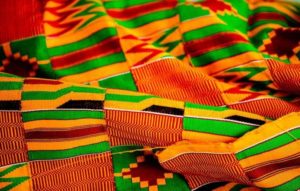Everything You Need to Know About African Kente Fabric
Kente is a brilliantly hued, banded material and is the most widely recognized fabric manufactured in Africa. Even though Kente material is identified with the Akan individuals in West Africa, especially the Asante Kingdom, the term begins with the adjoining Fante people. African Kente fabric is firmly related to Adinkra material, which has symbols stenciled into the fabric and is related to mourning.
Kente fabric is obtained from a textile practice that originated in Ghana hundreds of years prior. The fabric has represented social and cultural affiliations from West Africa across the diaspora, yet rumors have spread far and wide, suggesting that a spider is spinning an intricate web propelled the earliest Kente procedures and designs.
Weaving Kente fabric is a social practice of the Asante (otherwise called Ashanti) individuals, and these textures were initially utilized solely to dress emperors and their courts. Every block, pattern, and color has a specific name and meaning, and the cloth often includes adinkra symbols, which address thoughts or idioms. The Ewe individuals of Western Africa have also woven Kente fabric for quite a long time. However, according to Kente ace weaver ‘Kwasi Asare’, who is frequently authorized to make unique Kente pieces and shows workshops in the U.S., their designs are ordinarily more “illustrative,” where Asante Kente designs will, in general, be more dynamic.
The Ewe individuals of Western Africa have also woven Kente fabric for quite a long time. However, according to Kente ace weaver ‘Kwasi Asare’, who is frequently authorized to make unique Kente pieces and shows workshops in the U.S., their designs are ordinarily more “illustrative,” where Asante Kente designs will, in general, be more dynamic.
Here are a couple of colors generally found in African prints, and their implications, per Sankofa Edition and Adinkra Brand.
- Black: profound strength, development; grieving and memorial service rituals
- Red: Blood, demise, political enthusiasm, strength
- Blue: Peace, love, solidarity, and amicability
- Gold or yellow: Wealth, eminence
- Green: Growth, reap, reestablishment
- White: Purity, purging customs, happy events
- Purple or maroon: Mother Earth, recuperating, assurance from evil
An obvious identifier of Kente cloth is its vertical strips of fabric, which is regularly four inches broad. These strips are then trimmed and stitched together in order to make more extensive swaths that might be worn on the body. By placing blocks of pattern close to each other, meaning for the entire piece arise. Verifiably, when African Kente was utilized exclusively for royal courts or renowned occasions, the strips were made of silk; today, you’ll likewise discover Kente made of cotton or rayon blends.
Kente material is apparently the most notable textile export from the African continent to the western world; mud fabric and African wax prints are additionally broadly accessible, particularly in urban areas where West Africans have resided across the United States and Europe. Kente has additionally come to symbolize a kind of solidarity with an African legacy—most as of late and controversially, manifested by the body of senators who wore Kente material while stooping for nine minutes in recognition of George Floyd.
Conclusion
Typically, stoles made of African Kente Fabric are worn proudly by Black school graduates every spring. Upon the occasion of Ghana’s independence in 1960, the first president of the nation Kwame Nkrumah commissioned a Kente cloth to be displayed at the UN General Assembly in New York.
